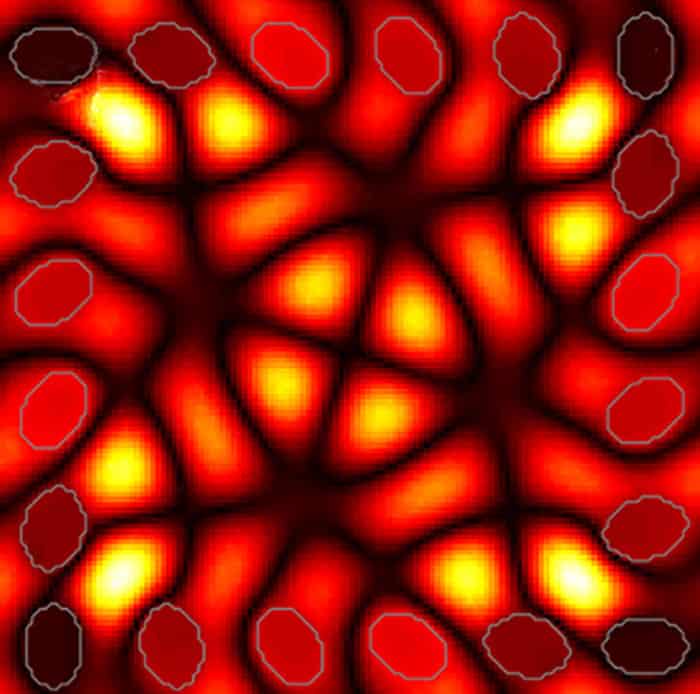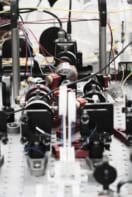
A new laser based on a swirling vortex of light has been created by physicists in the US. The “topological-defect laser” could be a useful addition to lab-on-a-chip devices, where it could manipulate fluids and tiny particles. The design could also be modified to create beams of light with orbital angular moment (OAM).
Conventional lasers confine light by bouncing it back and forth in an optical cavity made of two opposing mirrors. Hui Cao and colleagues at Yale University and the Joint Quantum Institute at the University of Maryland have taken a new twist on this design by making an optical cavity that confines light by having it swirl around in a vortex. They made their optical cavity within a photonic crystal, which is a material containing a regular array of elements which are separated by distances on par with the wavelength of light. Light at certain wavelengths and travelling in certain directions will pass freely through a photonic crystal, whereas light not meeting these criteria will be diffracted into a new trajectory.
Topological vortex
The team’s photonic crystal comprises an array of holes in a thin sheet of gallium arsenide. Each hole is elliptical and the rotational orientations of the individual ellipses are set to create a vortex-like “topological defect”. The laser’s optical cavity lies at the centre of the defect and is a solid square of gallium arsenide with no air holes. The structure is designed so that light inside the cavity is reflected from its walls, thereby causing the light to flow around the cavity in a vortex.
The gallium-arsenide sheet also contains three layers of quantum dots made of indium arsenide. To operate their topological-defect laser, the researchers first “pump” their device using pulses from an external laser. This puts the quantum dots into an excited state, which then decays with the emission of laser light. This emission is stimulated by the trapped vortex of light and the device behaves like a laser, but with the light travelling in a circle rather than bouncing back and forth.
Twisted light
One potential application of the laser is to manipulate fluids of tiny particles in a lab-on-a-chip device. “I have been talking to people who are experts on particle sorting,” Cao told physicsworld.com. Cao also said that her team is working on a new topological-defect laser that is designed to emit “twisted light” that carries OAM. Such light could have a wide range of uses including optical telecommunications, quantum computing and new analytical techniques for chemistry and biology.
The new laser is described in a paper in Journal of Optics that can be read free of charge.



